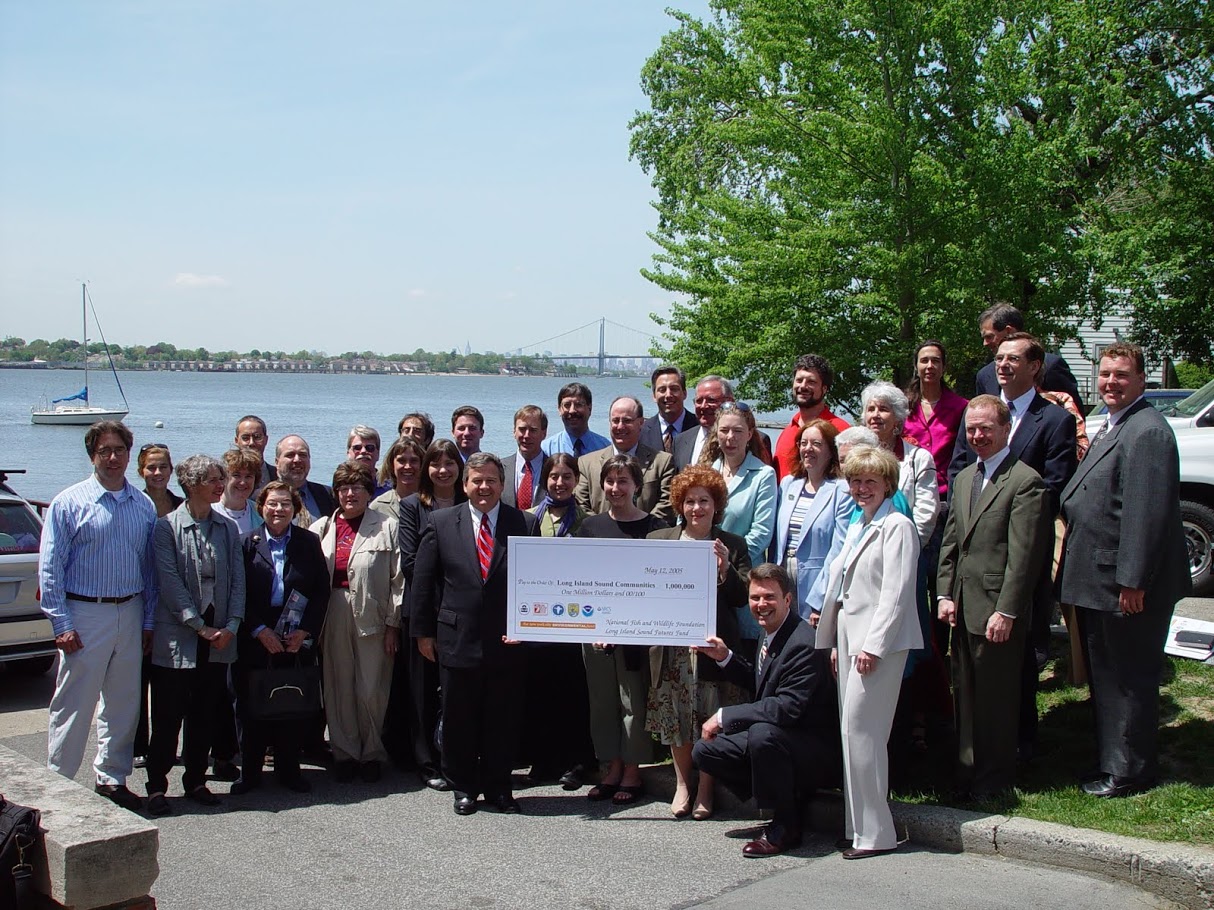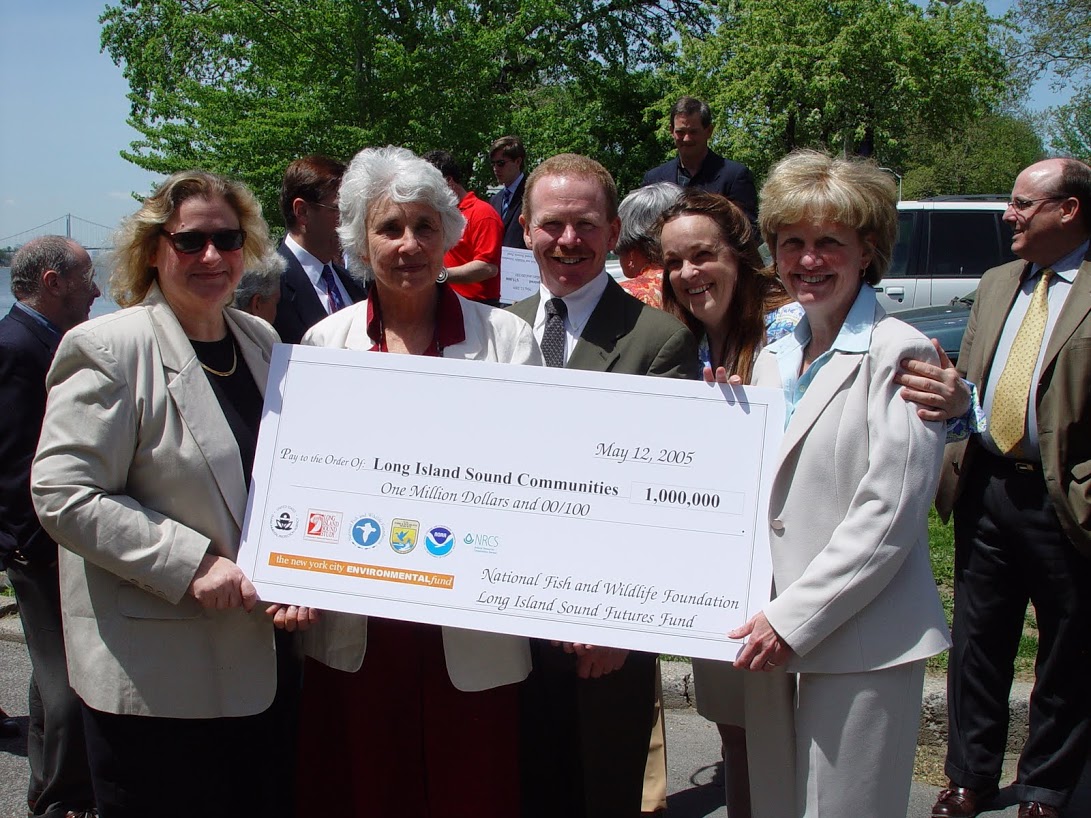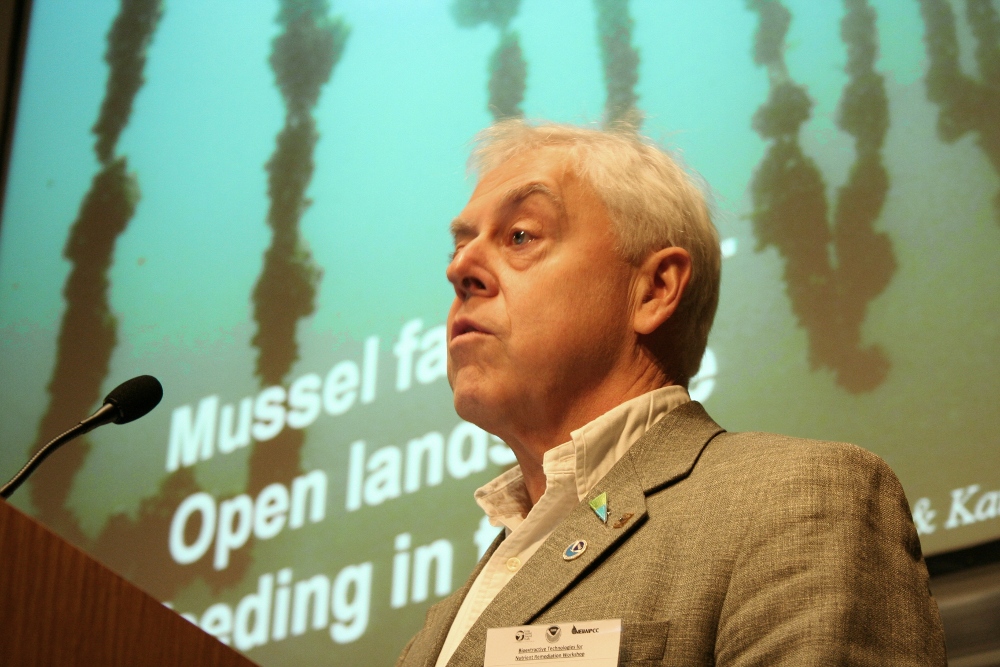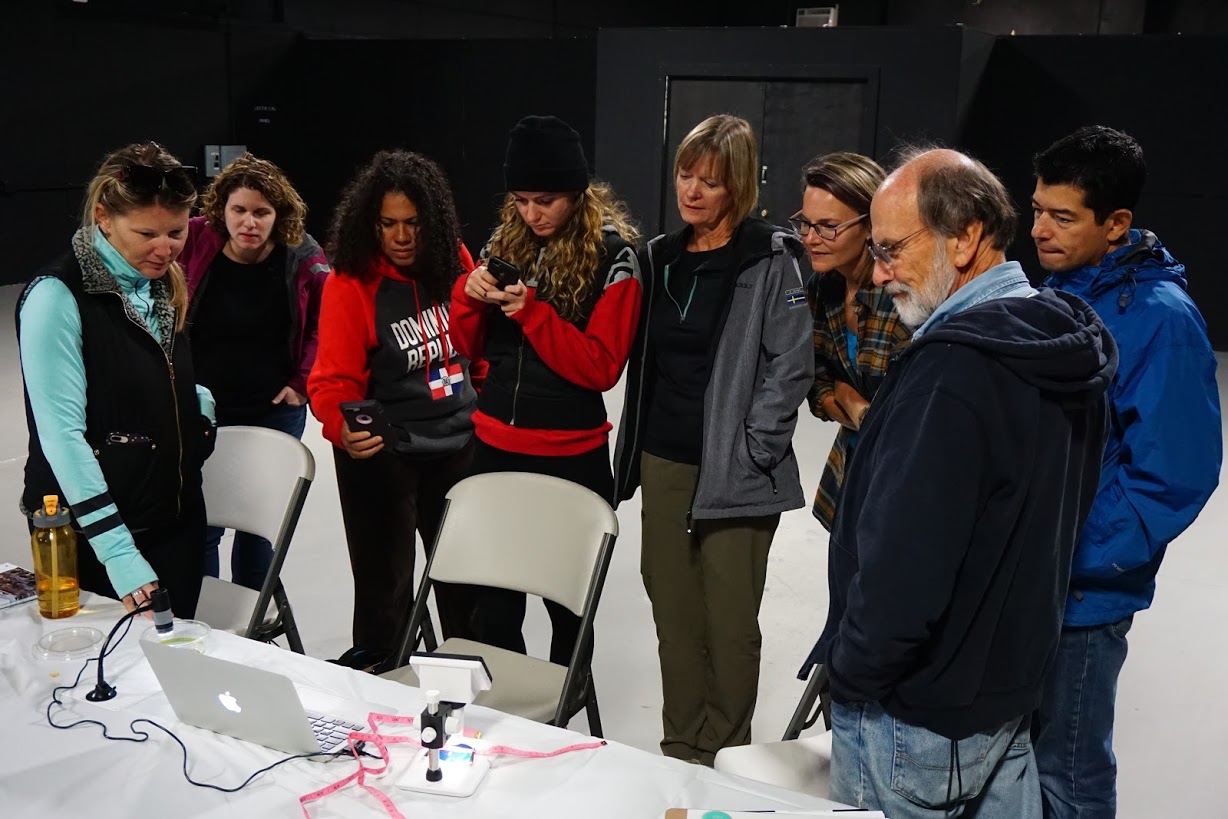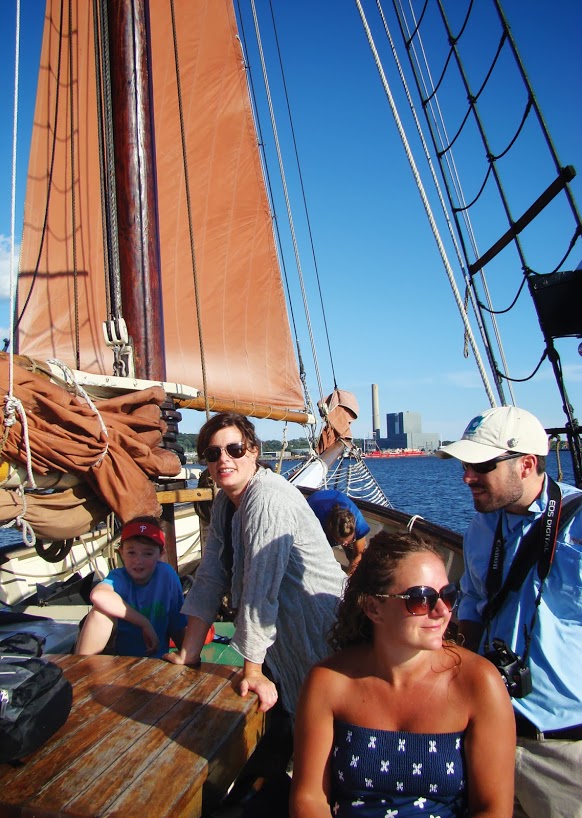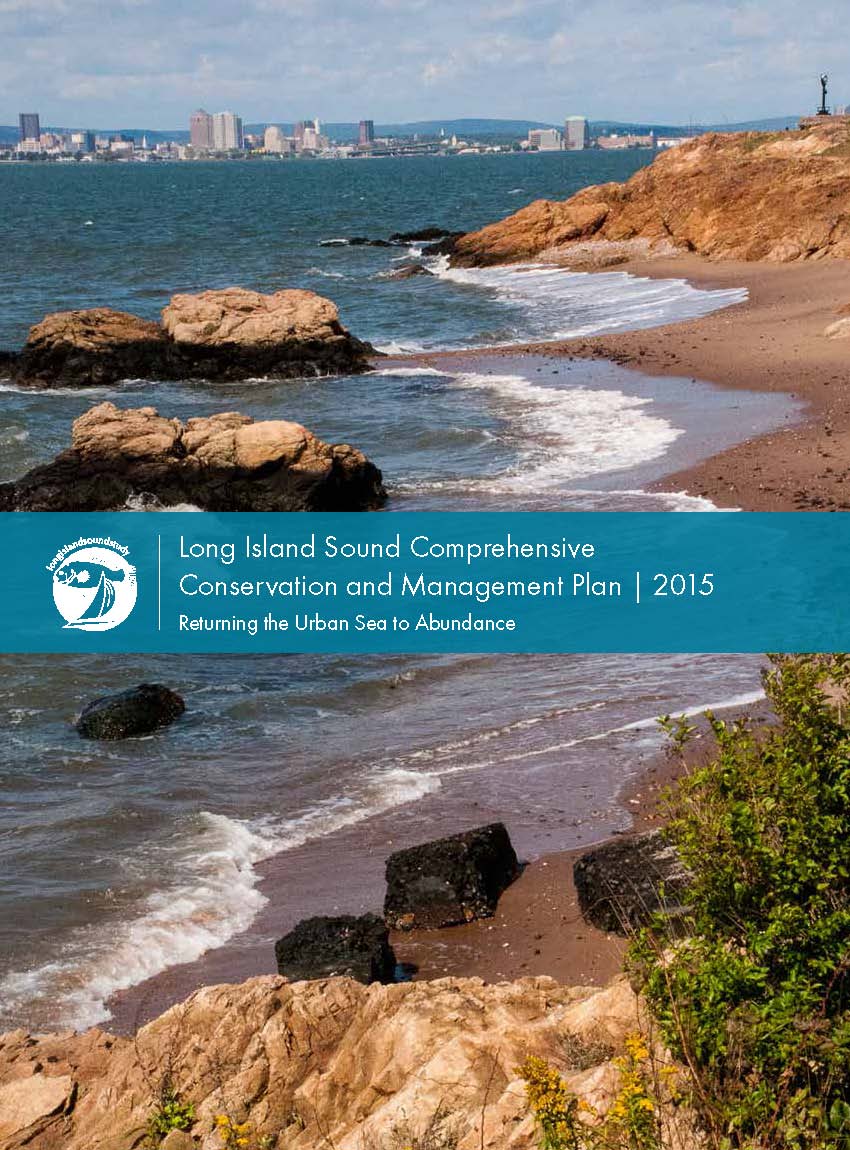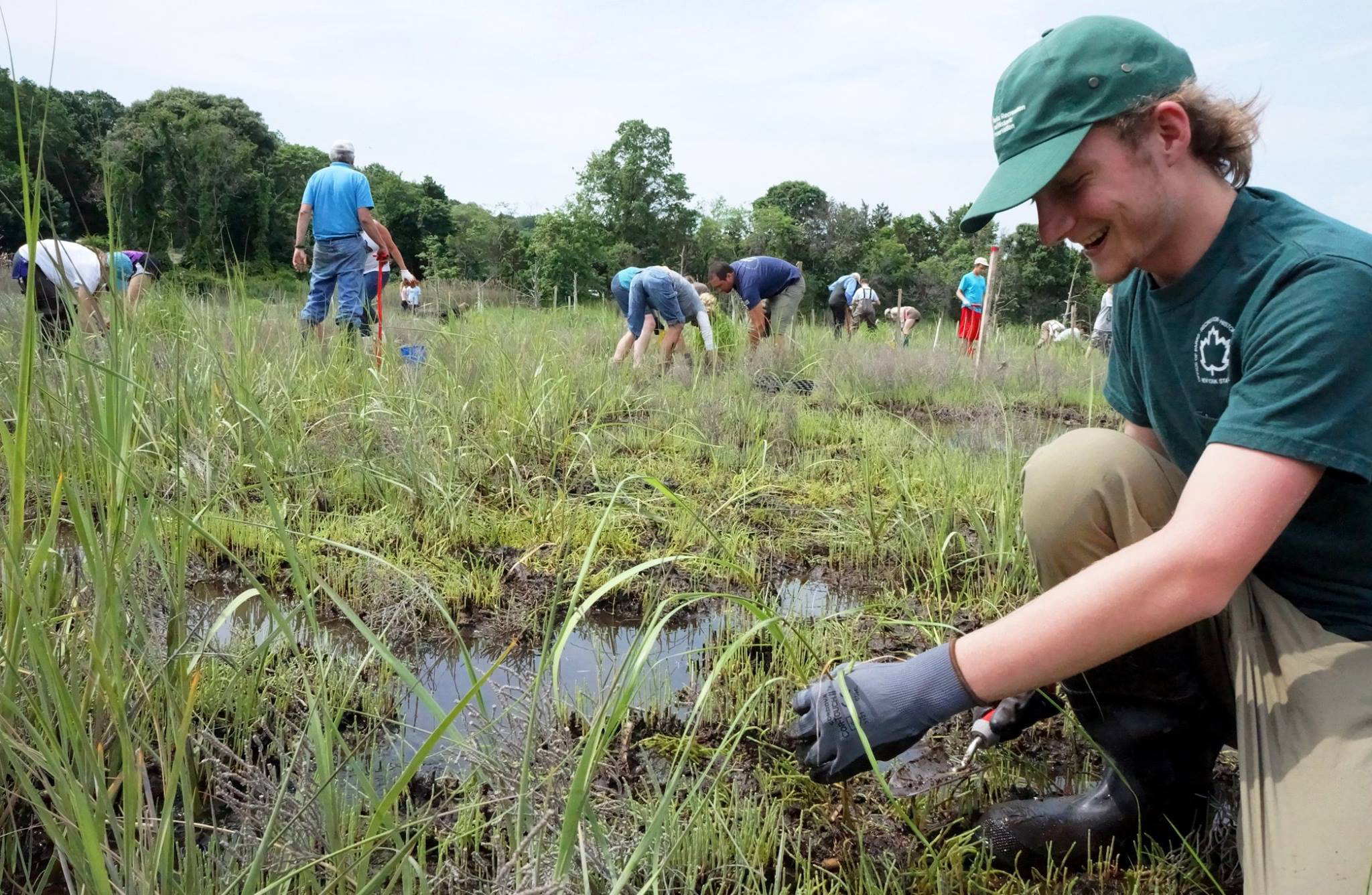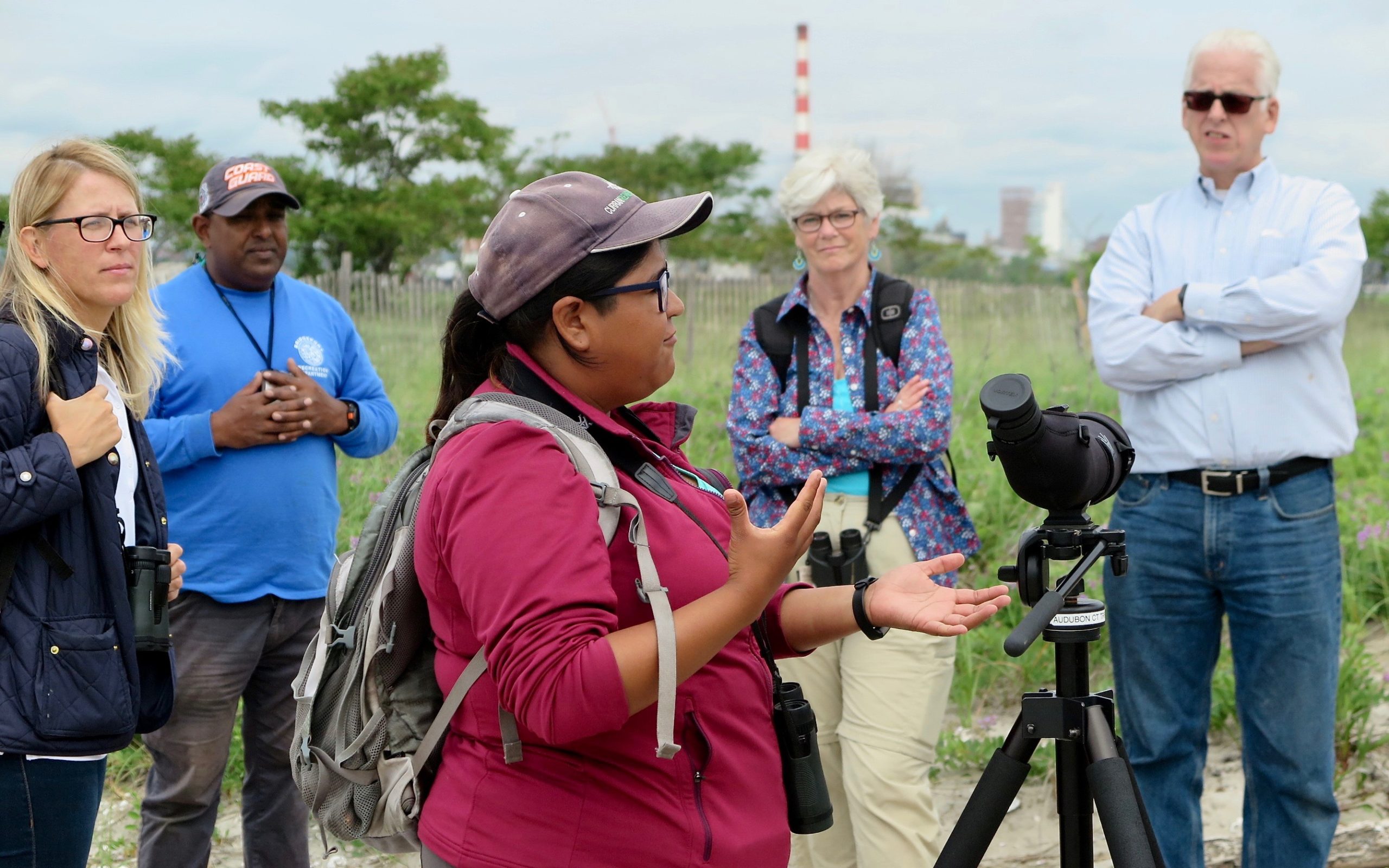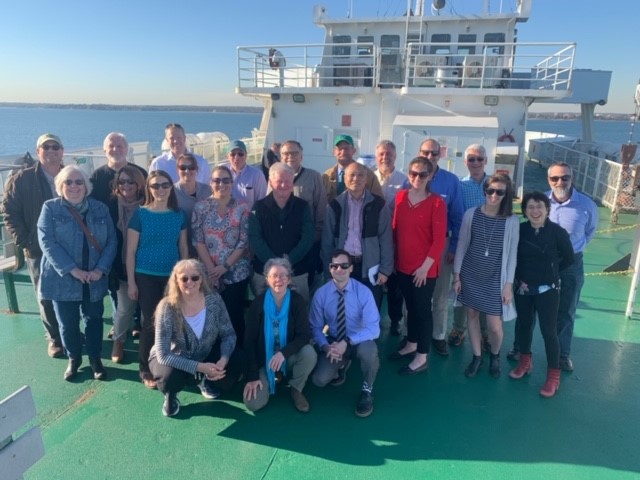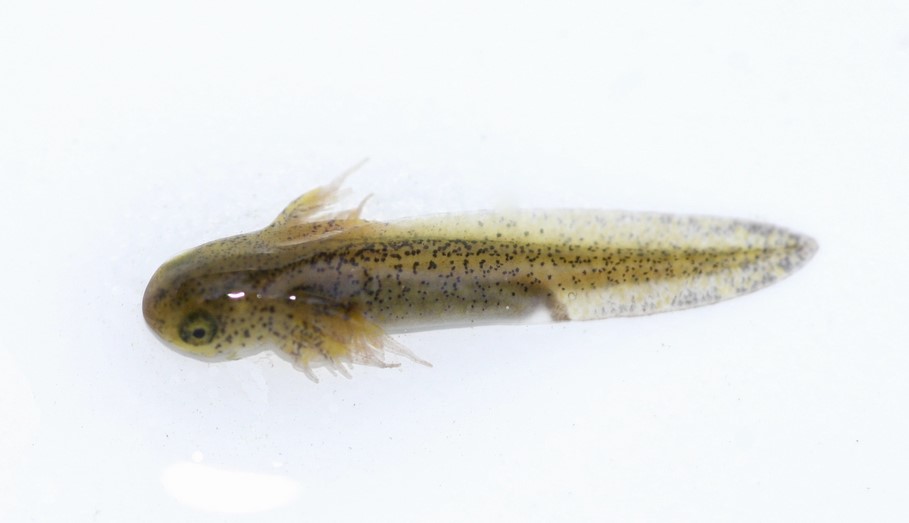
Photo by Brian Gratwicke from DC, USA / CC BY (https://creativecommons.org/licenses/by/2.0)
In honor of Earth Day week, Judy talks today about the books and online resources that have inspired a greater understanding of ecology in general, and gardening specifically. Guest Jim Sirch is the Education Coordinator at the Yale Peabody Museum of Natural History in New Haven. He’s known to many for his professional development activities at the Museum, and has received awards for his science service and advocacy. Jim was also instrumental in bringing the citizen science FrogWatch program to Connecticut, and has recently started a new nature blog at the museum, https://beyondyourbackdoor.net. Jim can be reached at: James.Sirch@yale.edu.
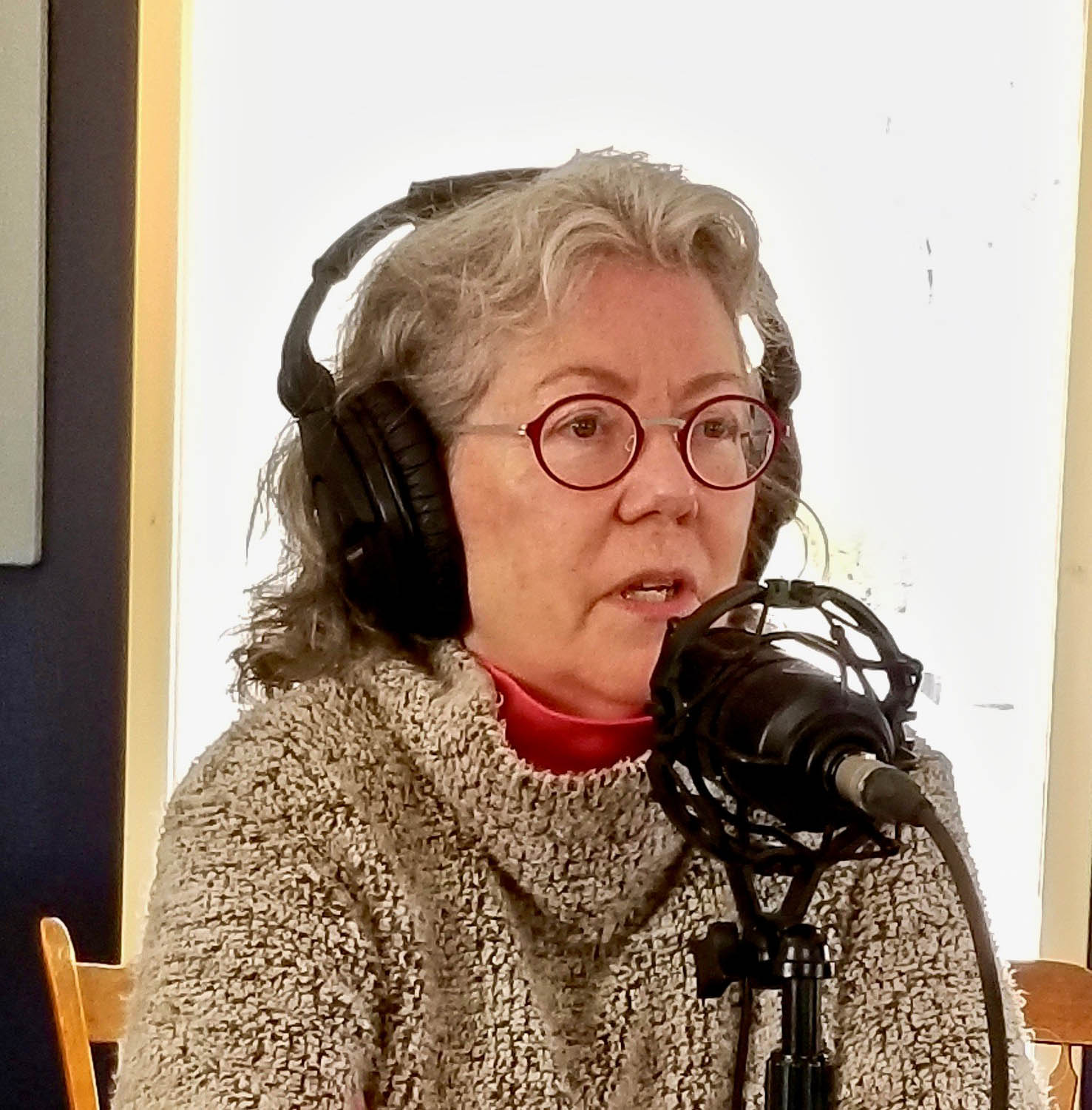
Connecticut Sea Grant’s Judy Preston, who is the Long Island Sound Study Outreach Coordinator for Connecticut, is on the air and on online streaming! Judy is the host of a new radio show on the iCRV internet radio station in the CT River Valley. The “Gardening for Good” show strives to make connections between good gardening practices and protecting local streams and Long Island Sound.

The spring 2020 issue of Sound Update focuses on Long Island Sound Study’s Year in Review of 2019. Various clean water, habitat restoration, education, and science projects from Connecticut and New York are highlighted.
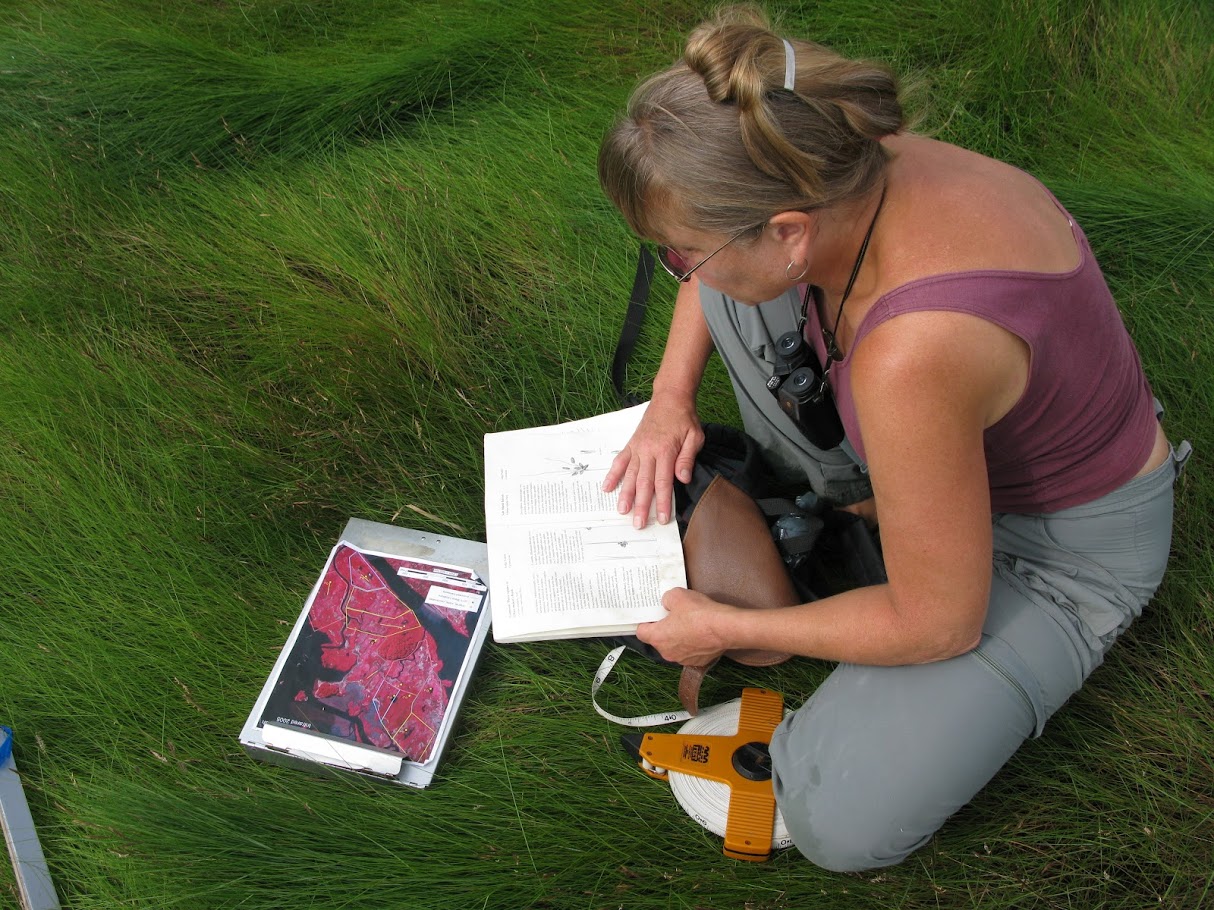
During the Covid-19 pandemic, Long Island Sound Study staff and personnel from organizations that partner with LISS are continuing to work on projects to restore and protect Long Island Sound, but in remote locations. We are adjusting how we work, moving to remote meetings and expanding use of on-line collaboration tools. Inevitably, some in-person workshops have been postponed as described below.
- A Community-Based Social Marketing Workshop, which had been scheduled for this week in Bridgeport, will be rescheduled for the fall. The workshop involves training resource managers and environmental advocates on how to develop effective environmental behavior change campaigns. It will be led by Dr. Doug McKenzie-Mohr, an internationally known environmental psychologist who provides training on developing Community-Based Social Marketing campaigns, a method that incorporates scientific knowledge on behavior change into the design and delivery of locally-based outreach campaigns. More information about CBSM is on the Long Island Sound Study website.
- The third Long Island Sound Tidal Wetlands Loss Workshop, planned for June, will be rescheduled, date to be determined. In the previous workshops held in 2003 and 2014, the New York State Department of Environmental Conservation and LISS convened local tidal wetland experts and professionals who helped identify potential causes for why there was a loss of tidal marsh habitats in the Sound and determining priorities for further research, monitoring, and restoration efforts. Information on the previous workshop is available under Work Group Resources in the Habitat Restoration and Stewardship Work Group web page.
The silvery alewife (river herring) is a small (8-12-inch) fish with a rounded belly. Juveniles migrate in an incredible journey from tributaries and freshwater rivers where they hatched, through Long Island Sound to the Atlantic Ocean. As adults, they journey back again to freshwaters to spawn.
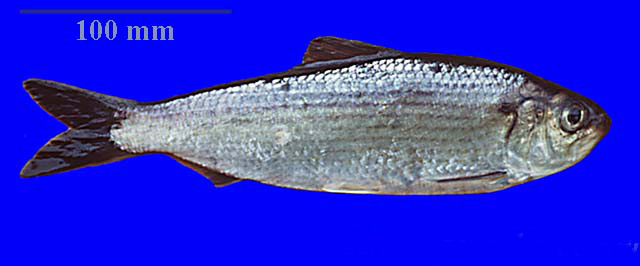
Wikimedia Commons.
Once plentiful, populations have severely declined due to overfishing, bycatch, pollution, and loss of access (dams, culverts) to their freshwater spawning grounds. Actions taken by state agencies and partner conservation organizations to help restore alewife populations include removing dams, building fishways, reintroducing pre-spawn adults into streams that had previously supported runs, and eliminating harvests. In Connecticut, an emergency fishery closure for the anadromous alewife is in effect. In New York, the anadromous alewife fishery is also closed with the exception of the Hudson River.
More Alewife Facts
- River herring runs used to turn some rivers “silver” each spring when they migrated by the millions upstream. They are abundant now only in rivers where they can reach good spawning habitat.
- Females produce 60,000 to 350,000 eggs, but only a few young fish survive to spawn 3 to 5 years later. The rest get eaten by other fish and animals (or they are caught in offshore nets as bycatch).
- Rivers and lakes with alewife and blueback herring tend to grow larger sport fish like smallmouth bass, largemouth bass, trout and landlocked salmon.
Want to know more facts? These and others are included in a US Fish and Wildlife fisheries web page on herring migration. And you can also learn more about the herring lifecycle at:
https://www.fws.gov/fisheries/fishmigration/alewife.html
Reconnecting Alewives to Historic Spawning Grounds
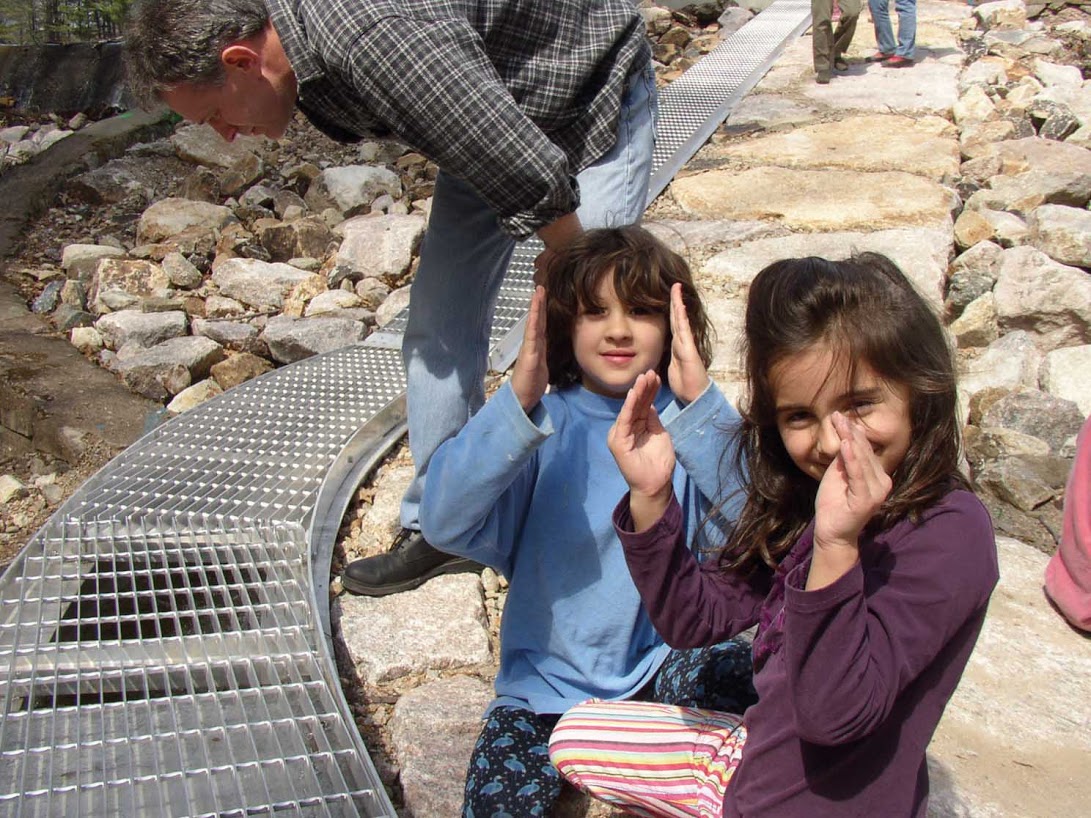
Since colonial times, fish passing through the Sound have been blocked from their upstream habitats due to barriers such as dams and culverts. The Long Island Sound Study helps to restore fish passage by supporting state and local efforts to remove dams, build fishways, and reconstruct impassable or undersized culverts. Once the barriers are removed, migratory fish such as river herring and American eel can return to their historic river habitats. Since 1998, Long Island Sound Study’s partners have reconnected 419 miles of streams for fish passage to and from Long Island Sound.
Learn More:
- Restoring Migratory Fish Passage in Long Island Sound Fact Sheet
- River Miles Restored Ecosystem Target
- Index of Anadromous Fish Runs
- CT DEEP Fisheries Biologist Steve Gephard fish report on spring migratory fish counts

And learn about fish migration around the world at the World Fish Migration Foundation website.
HOW DID THE ALEWIFE GET ITS NAME?
Merriam-Websters Dictionary states it is perhaps alteration of an Old French word, allowes, which is a kind of shad. Alewifes are related to shad. According to the Bronx River Alliance website New Englanders might have named the fish alewives after their home brewer. Read about this tale and other cultural facts in an article on the Bronx River Alliance website.
Alewifes on the Move!
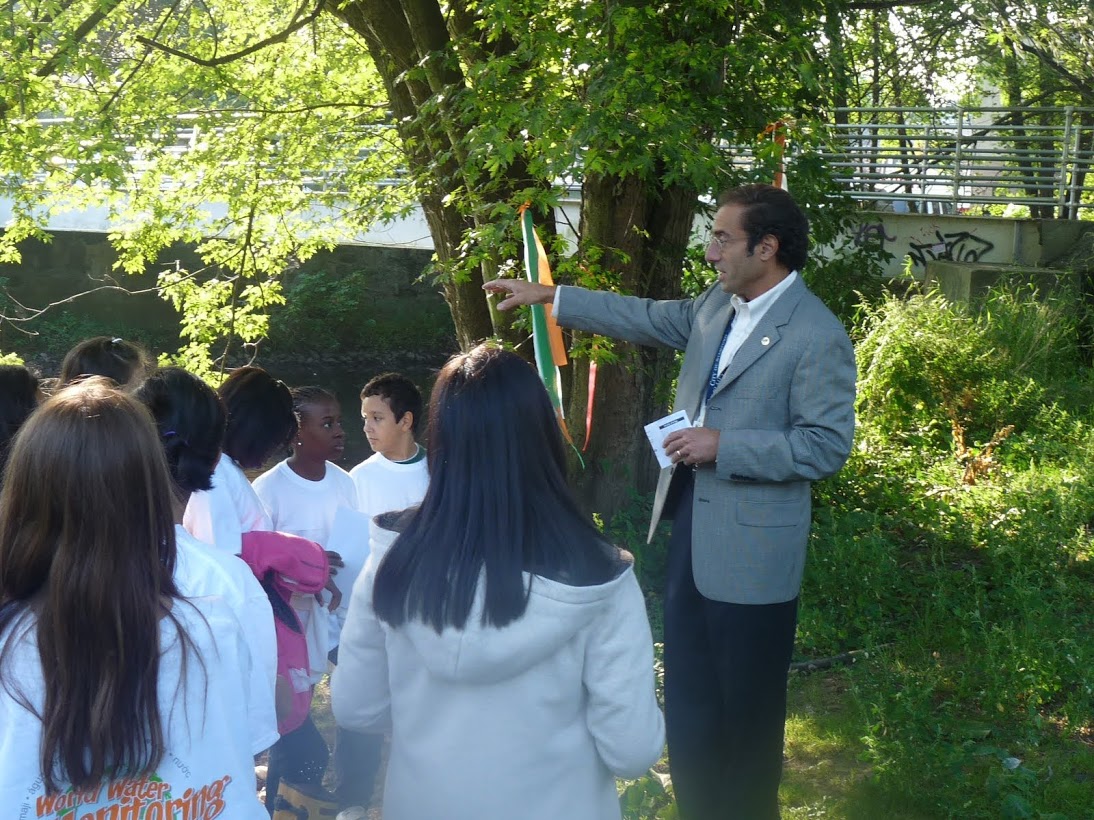
EPA’s Long Island Sound Office Director Mark Tedesco Reflects on 50 Years of EPA and Earth Day, and 35 Years of the Long Island Sound Study.
Fifty years. That’s right. The Environmental Protection Agency was established on December 2, 1970, consolidating in one agency federal responsibilities for research, monitoring, and setting and enforcing environmental standards. EPA’s formation was preceded by the first Earth Day on April 22 of that year, itself preceded by the prior decade’s rising tide of public support for strengthened environmental protection.
Curious to know more about the origins of EPA and its 50-year history of accomplishments? See https://www.epa.gov/history/origins-epa. Want ideas for recognizing and celebrating the 50th anniversary of the first Earth Day? See https://www.epa.gov/earthday.
But also worth recognizing and celebrating are the 35 years of action to protect and restore Long Island Sound, which began in 1985 when Congress provided funds to investigate its environmental condition. That year, the Long Island Sound Study (LISS) began as a partnership among the EPA, New York State, Connecticut, the National Oceanic and Atmospheric Administration, the Interstate Environmental Commission, the State University of New York, and the University of Connecticut.
Researchers investigated the Sound for toxic contamination, pathogens, hypoxia (the condition of low levels of oxygen in waters that impair underwater habitats and harm aquatic life), and floatable debris. They quickly focused on hypoxia after three consecutive summers of severely hypoxic waters were observed in the western Sound from 1987 to 1989. In 1987 Congress amended the Clean Water Act, formally creating the National Estuary Program (NEP) and Long Island Sound was designated an Estuary of National Significance.
Unlike traditional regulatory approaches to environmental protection, the LISS targets a broad range of issues and works with stakeholders to develop coordinated solutions. The issues LISS identified in its early years led to the creation in 1994 of a Comprehensive Conservation and Management Plan with a goal to restore and protect the Sound. Revised in 2015, the CCMP will update its five-year action plan in 2020.
A thirty-five-year anniversary is time to celebrate past accomplishments and become inspired to tackle remaining challenges. Fifteen years ago, the Long Island Sound Study commemorated the 20th anniversary of its formation with a special edition of the Sound Update newsletter highlighting 20 topics over 20 years. Now we add another 15 to celebrate our 35th anniversary (and even add one more for good luck). I hope you feel inspired to continue our progress and make Long Island Sound a great place to work, live, and recreate now and for future generations.
Mark Tedesco is the director of the United State EPA Long Island Sound Office. The office coordinates the Long Island Sound Study, administered by EPA as part of the National Estuary Program under the Clean Water Act. Tedesco received his MS in marine environmental science in 1986 and a BS in biology in 1982 from Stony Brook University.
This year marks the 50th anniversary of Earth Day and the US Environmental Protection Agency. It also is the 35th anniversary of the Long Island Sound Study, the partnership of local, state, and federal governments with industry, universities, community groups, and citizens to restore and protect Long Island Sound.
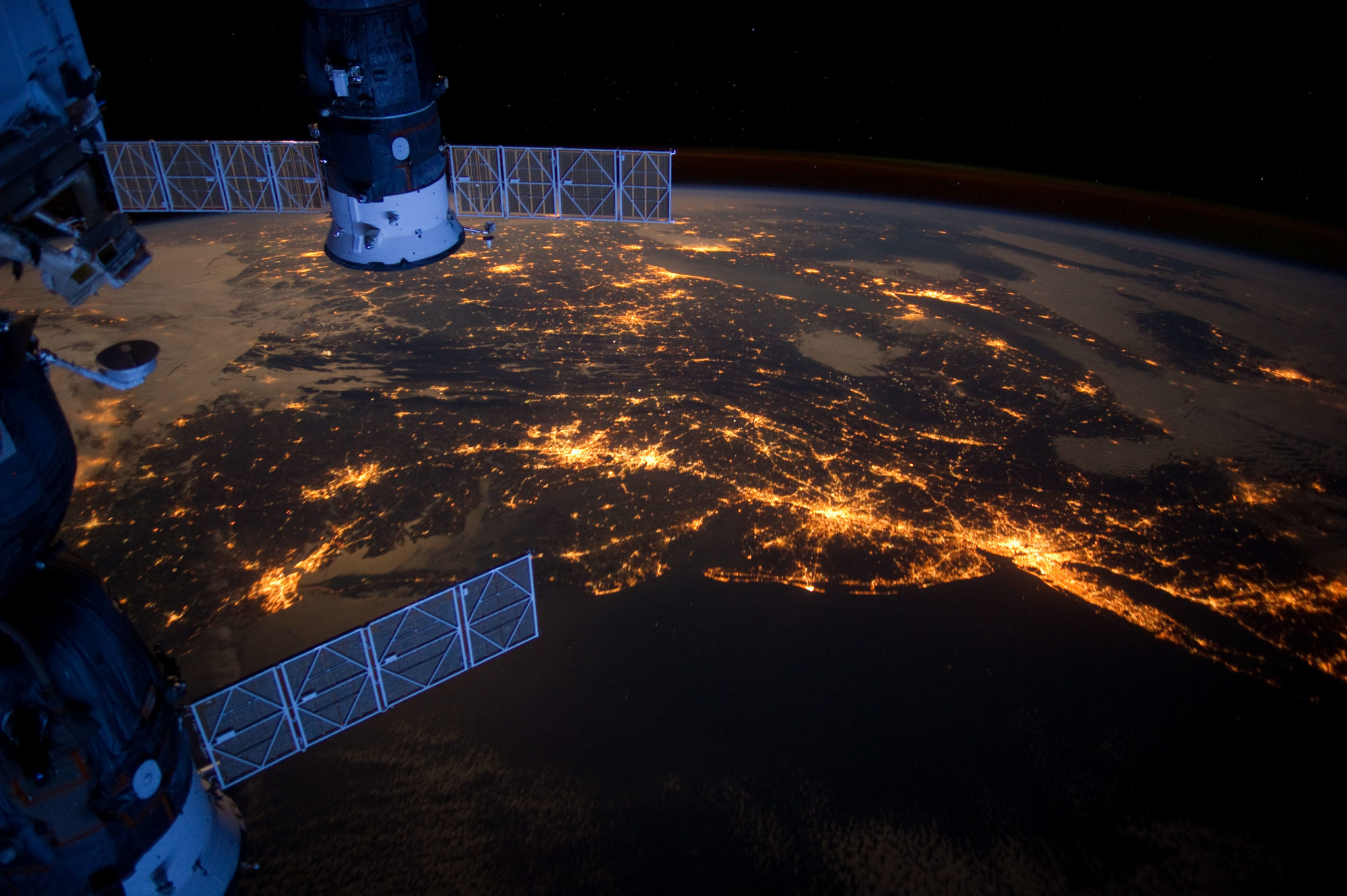
What influenced the first Earth Day celebration 50 years ago? Historians look back to the 1960s when Americans in larger numbers were beginning to become aware of the dangers of pollution and toxic chemicals to their environment. In the beginning of the decade Rachel Carson’s book Silent Spring brought attention to the pesticide DDT threatening the extinction of the Bald Eagle. Later on, Americans were expressing their concerns about a range of environmental threats, from oil spills fouling beaches in California to the effects of leaded gasoline on human health, particularly in urban areas. According to Earth Day Network, groups that had been fighting for a better environment on individual issues came together to attend rallies in the first Earth Day celebration. “On April 22, 1970, 20 million Americans — at the time, 10 percent of the total population of the United States — took to the streets, parks and auditoriums to demonstrate for a healthy, sustainable environment in massive coast-to-coast rallies,” according to the Earth Day website. The bipartisan event – it was co-sponsored by a Democratic U.S. Senator and a Republican Congressman – was attended by Americans of all races, ages, and incomes. It also was credited with helping to launch the US Environmental Protection Agency in December of that year. The new EPA consolidated many environmental responsibilities of the federal government under one agency. Soon Earth Day and the founding of EPA were followed by passage of landmark environmental legislation, including the Clean Air, Clean Water, and Endangered Species Acts.

Those efforts continued into the 1980s as communities worked through nonpartisan efforts to restore and protect their local environments with help from local, state, and federal governments. In 1987, Congress amended the Clean Water Act to authorize the National Estuary Program to specifically deal with the environmental threats to America’s estuaries, the coastal environments where salty ocean water mixes with freshwater from upland rivers and streams. The Long Island Sound Study was one of four inaugural estuary programs, but Congress actually started funding the Long Island Sound Study back in 1985 to study pollution problems and identify solutions.
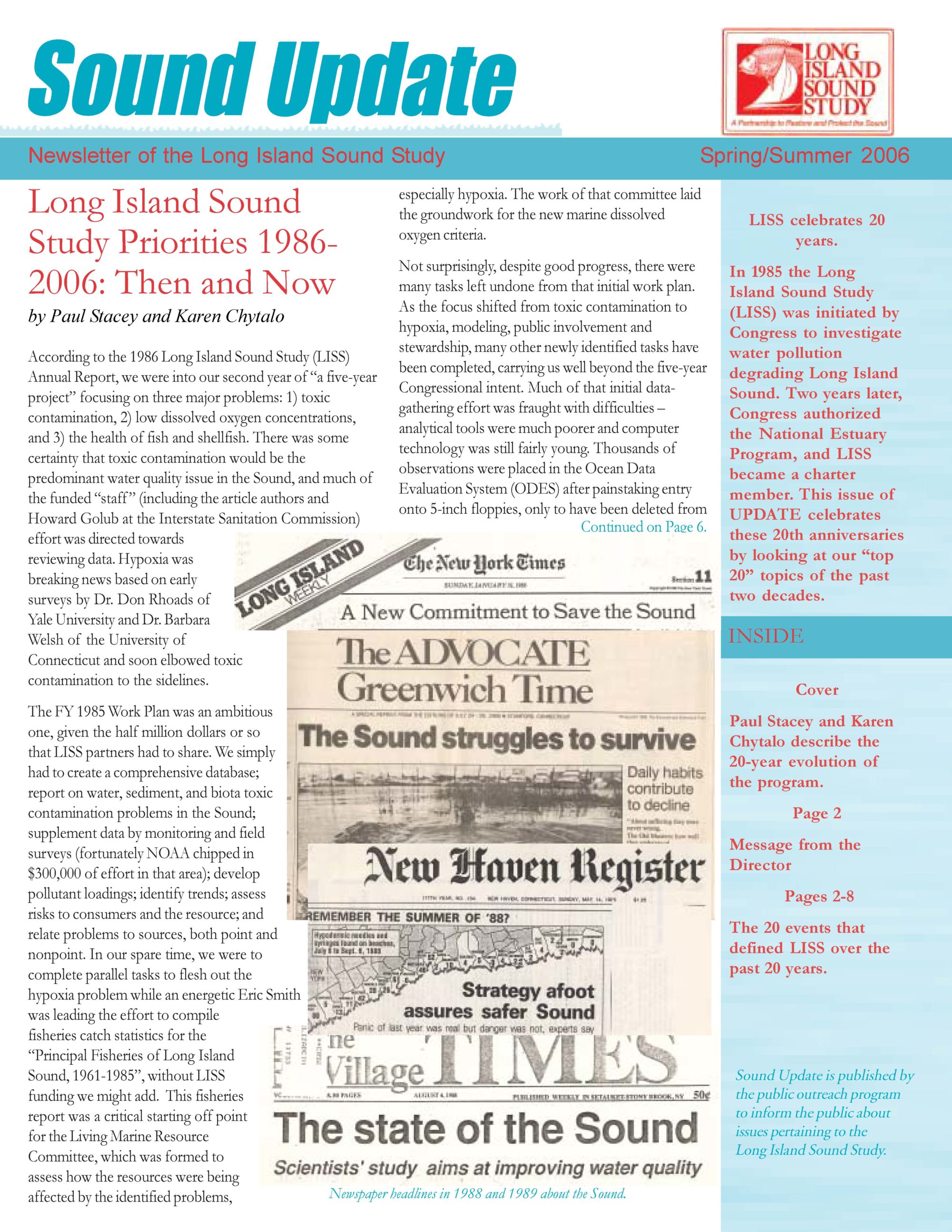
Fifteen years ago, the Long Island Sound Study (LISS) commemorated the 20th anniversary of its formation with a special edition of its Sound Update newsletter highlighting 20 topics over 20 years. The issue remains a good read to understanding the history of Long Island Sound study in its early years. With the exception of the Sound Update annual report, the newsletter is no longer in print. That doesn’t mean a new anniversary can’t be recognized and the many new achievements that have occurred over the last decade and a half highlighted.
Below is a list of 15 additional topics over the past 15 years to commemorate and celebrate. A 16th topic was added to wish continued good fortune in restoration efforts. A slide show highlights some of the topics. Happy 35th and 50th!
- LISS Launches Grant Program to Fund the Sound’s Restoration (2005): The EPA, through the Long Island Sound Study, and partners that included the National Fish and Wildlife Foundation and the US Fish and Wildlife Service, awarded $1 million in grants to 28 local community organizations and governments through the newly-created Long Island Sound Futures Fund. Since 2005, LISFF has invested $22 million in 451 projects to help restore and protect Long Island Sound through its Comprehensive Conservation and Management Plan (CCMP). The grant program has generated an additional $39 million in grantee match, for a total conservation impact of $62 million for regional and local projects. The projects have reconnected 176 miles of river for fish passage, restored 1,114 acres of critical fish and wildlife habitat and open space, treated 212 million gallons of stormwater pollution, and educated and engaged 4.9 million people in protection and restoration of the Sound. The latest call for proposals was announced in March 2020 with the program expecting to distribute its largest amount ever – around $3 million.
- Long Island Sound Cable Fund Authorized to Explore the Sound’s Bottom Waters (2006): The Long Island Sound Study Policy Committee signed a Memorandum of Understanding to formally establish a framework to distribute a $6 million settlement to researchers to study and map Long Island Sound’s seafloor. The 2004 settlement between the states of Connecticut and New York, two power companies, and a cable company settled a permitting dispute related to two electrical cable crossings of Long Island Sound. Mapping the seafloor will provide information to better manage uses of Long Island Sound while protecting valuable habitats, including having a better understanding of the biological, chemical, and physical effects of existing or potential cable and pipeline crossings and mitigation of their impacts. To date, research teams have surveyed the Stratford Shoal area of the central Sound and Eastern Long Island Sound, documenting work through maps, videos, and images. Researchers are now planning surveys to map western Long Island Sound as well as areas around Manhattan.
- Habitat Restoration Initiative Reaches 100 River-Mile Goal (2007): The Long Island Sound Habitat Restoration Initiative reached a goal established in 1998 to reconnect 100 river miles to Long Island Sound for the passage of fish migrating to and from spawning grounds. The goal was reached one year ahead of schedule. As of 2019, LISS has reconnected 419 river miles with a new goal to reach 507 miles by 2035. The Futures Fund has aided in opening fish passage on river and streams by funding projects to remove dams, construct fishways over dams that block fish passage, and improve culverts that restrict fish passage.
- LISS Establishes Sentinel Monitoring Work Group (2008): The Long Island Sound Study established the Sentinel Monitoring Work Group to provide information and a framework to develop sentinel indicators that signal the impacts of sea-level rise and warming temperatures on the Sound, including its wildlife and water quality. The sentinel monitoring program has since funded research to help the region understand potential climate change impacts and to learn how to adapt to climate change by adjusting the way Long Island Sound is managed.
- LISS Sponsors International Bioextraction Workshop (2009): The Long Island Sound Study brought together an international roster of experts in Stamford, CT, to discuss new and innovative technologies to extract nutrients in coastal waters with the goal of improving water quality. Bioextraction involves the use of aquaculture practices to cultivate shellfish and seaweed. Nutrients in the water that would otherwise stimulate algal blooms are used instead by the shellfish and seaweed to grow, and then are harvested in order to be extracted from the water. The conference has led to over a decade of research and government and commercial aquaculture projects in the Sound. In 2019, LISS and the Futures Fund sponsored three new bioextraction projects in Connecticut and Long Island.
- Long Island Sound Mentor Teacher Program Expands (2010): New York Sea Grant expanded the Long Island Sound Mentor Teach Program to New York shoreline communities. The program was developed in 2002 by Connecticut Sea Grant to train creative and respected teachers to recruit and assist their peers in incorporating Long Island Sound content into curricula within the scope of state science frameworks, including Next Generation Science Standards. Since 2002 59 mentor teachers have held 53 LISMT and NGSS workshops, reaching 684 formal and informal k-12 educators, and through them, reaching nearly 55,000 students about the Sound in villages, towns, and cities throughout Connecticut and New York.
- CAC Takes Schooner for Sound Vision Tour Across the Sound (2011): Save the Sound, with the Long Island Sound Citizens Advisory Committee, used the Stamford-based SoundWaters Schooner to travel to seven Long Island Sound ports to promote the CAC’s Sound Vision Action Plan. The plan provided recommendations to protect the Sound’s water quality, wildlife, and local economy that became an important reference in revising the Long Island Sound Study’s Comprehensive Conservation and Management Plan. The Sound Vision plan was unanimously adopted by the 37 members of the CAC, representing business, municipal, environmental, civic and academic organizations from around the Sound.
- Sunken Meadow Resurgence Follows Destructive Storm (2012): In October 2012, Superstorm Sandy inflicted an estimated $70 billion in damage to the east coast of the United States, Canada, and the Bahamas. But for Sunken Meadow State Park in Kings Park, NY, the storm had a silver lining, revealing how nature can rebalance the environment for the good. The storm caused a breach and eroded away portions of a berm and roadway that restricted tidal flow and fish passage at the park. Sunken Meadow Creek now has tidal flow again and is returning to its natural state as an estuary where fresh and saltwater mix. Saltwater fish species previously cut off from the creek (including alewife, striped bass, and juvenile bluefish) and various shellfish, waterfowl, shorebirds, and wading birds are all benefiting. While Sandy wreaked havoc elsewhere, here it helped to restore 132 acres of tidal wetlands, a “natural” restoration project that had been the highest priority of the National Oceanic and Atmospheric Administration’s (NOAA’s) Coastal Restoration Program in the Northeast. In 2014, several partners went further, developing a restoration plan for the creek that included more tidal wetland restoration, fish passage feasibility studies, an 18-acre parking lot green infrastructure retrofit, and education and outreach.
- Science Synthesis Book Published (2013): The Long Island Sound Study, with Springer, a global publisher of science books, published the most comprehensive review and synthesis of scientific research in 35 years. A total of 59 scientists, resource managers, and historians, working with LISS, co-authored Long Island Sound: Prospects for the Urban Sea, citing 1,500 research papers, to summarize what is known about the historic and recent trends of the ecological health of Long Island Sound.
- Coastal Certificate Teaches Gardeners How to Garden for Sound Health (2013): The Long Island Sound Connecticut outreach coordinator launched the Coastal Certificate program for Master Gardeners to show them that gardening and landscaping can be compatible with protecting the health of streams and Long Island Sound. Coastal Certificate students are taught to create gardens dominated by native plants that provide the best habitats for birds, insects, and other creatures. Native plants can also do without the fertilizers, pesticides, and excess water inputs required of non-natives, making them more economical, easier to grow, and better for the environment. Since 2013, there have been eight Coastal Certificate courses instructing 215 students. The Master Gardeners have in turn volunteered 2000 hours in their communities to teach sustainable gardening and to create service projects such as constructing community rain gardens.
- LISS Updates its Comprehensive Conservation and Management Plan (2015): The Long Island Sound Study finished a three-year review to revise its 1994 Comprehensive and Conservation and Management Plan. The new CCMP established 20 ambitious ecosystem targets to be achieved by 2035, and sets new strategies to implement actions to restore and protect the Sound under four themes: Clean Waters and Healthy Watersheds, Thriving Habitats and Abundant Wildlife, Sustainable and Resilient Communities, and Sound Science and Inclusive Management.
- States Meet Ambitious Nitrogen-Reduction Target (2016): Connecticut and New York met the goal established with the EPA in 2000 in the Total Maximum Daily Load of nitrogen. Point sources such as wastewater treatment plants reduced their discharge by 58.5 percent, one year ahead of schedule. As of 2019, over 42 million fewer pounds of nitrogen a year are discharged into Long Island Sound compared to the early 1990s. The states and EPA are now looking to measures to meet goals for reducing nonpoint sources of nitrogen pollution, including from sewage in septic systems, stormwater runoff, and fertilizer from lawns, as part of one of the CCMP’s new ecosystem targets. Reducing nitrogen is considered an important condition to improving oxygen levels and water quality in Long Island Sound (see topic #14).
- Habitat Restoration Initiative Reaches 2000-Acre Goal (2018): The Long Island Sound Study Habitat Restoration Initiative met its goal established in 1998 to restore 2,000 acres of habitat, including tidal wetlands, coastal forests, and coastal grasslands, two years ahead of schedule. A new goal, to restore an additional 1,000 acres between 2015 and 2035 was established as part of a CCMP ecosystem target.
- LISS Research Grant Program Awards Grants for 10th Research Cycle (2018): The Long Island Sound Study Research Grant Program, established by LISS and the Connecticut and New York Sea Grant Programs in 1999, provided funding for its 10th research grant cycle. The program provides grants to researchers whose work helps meet the needs of decision-makers to improve the management of Long Island Sound. Through LISS research grants, scientists have increased our understanding of the connection between nutrient pollution and the Sound’s water quality, the impacts of pollution on habitats and fisheries, and the impacts of a changing climate on the Sound and its habitats. Since the first grant cycle began in 2000 more than $7 million was awarded to 44 projects.
- Water Quality is Improving (2019): The Long Island Sound Study is meeting its ecosystem target to improve water quality by reducing hypoxia (measured as the maximum area of bottom waters with dissolved oxygen ≤ 3 mg/L). The five-year rolling average of hypoxia from 2015 to 2019 is 89 square miles compared to an average of 208 square miles from 1987-2000, a 57 percent reduction. The year 2000 was when Connecticut, New York, and EPA set a Total Maximum Daily Load of nitrogen, which can result in the depletion of oxygen. The highest five-year period of hypoxia since 1987 when water quality monitoring began was an average of 240 square miles per year from 1992 to 1996. Meeting this ecosystem target is an important goal for protecting the Sound’s fishery and to provide the necessary conditions for restoring underwater eelgrass meadows in the Sound’s harbors, coves, and bays.
- LISS Budget Passes $20 Million Mark (2020): Congress approved $21.6 million for the Long Island Sound Study for the federal fiscal year beginning Oct. 1, 2020, a $7 million increase from the 2019 funding level. After averaging around $4.5 million between 2011 and 2016, the increased funding has strengthened federal-state partnerships, increased assistance to local governments, and fostered public-private partnerships to protect and restore Long Island Sound. Work to measure and improve the quality of Long Island Sound waters and sediments, bays and harbors, rivers and streams have expanded. The number of on-the-ground projects to improve water quality, restore habitat, and conserve land has increased. Larger and more complex habitat protection and restoration projects are being undertaken.

Judy talks about what it means to garden sustainably with Nancy Ballek of Ballek’s Garden Center in East Haddam, CT. Ballek shares her considerable knowledge of plants, soil, and pollinators plus her long history and attachment to the CT. River Valley. Ballek’s family dates back to the 1660s on the farm that today houses greenhouses and provides over 10,000 varieties of herbs, annuals, perennials, and tropical plants.
Ballek looks at what it means to maintain a healthy soil, how that impacts water quality, and why native plants are an important tool in our sustainability basket. She also features several of the native plants that she particularly loves and recommends to her customers.
Sustainability isn’t just an idea for the Ballek family: by investing in solar energy, all the center’s electricity and hot water needs are met by the sun.

Connecticut Sea Grant’s Judy Preston, who is the Long Island Sound Study Outreach Coordinator for Connecticut, is on the air and on online streaming! Judy is the host of a new radio show on the iCRV internet radio station in the CT River Valley. The “Gardening for Good” show strives to make connections between good gardening practices and protecting local streams and Long Island Sound.
Piping plovers, little shorebirds that lay eggs on sandy beaches, need everyone’s help. You may recognize them by a single black band around the neck, their orange-gold legs, or their melodious whistle. But because their bodies and their tiny speckled eggs are the color of sand, they are easily trampled or disturbed by unwary beachgoers. Paying attention to warning signage and fences erected to protect plover nests will help!
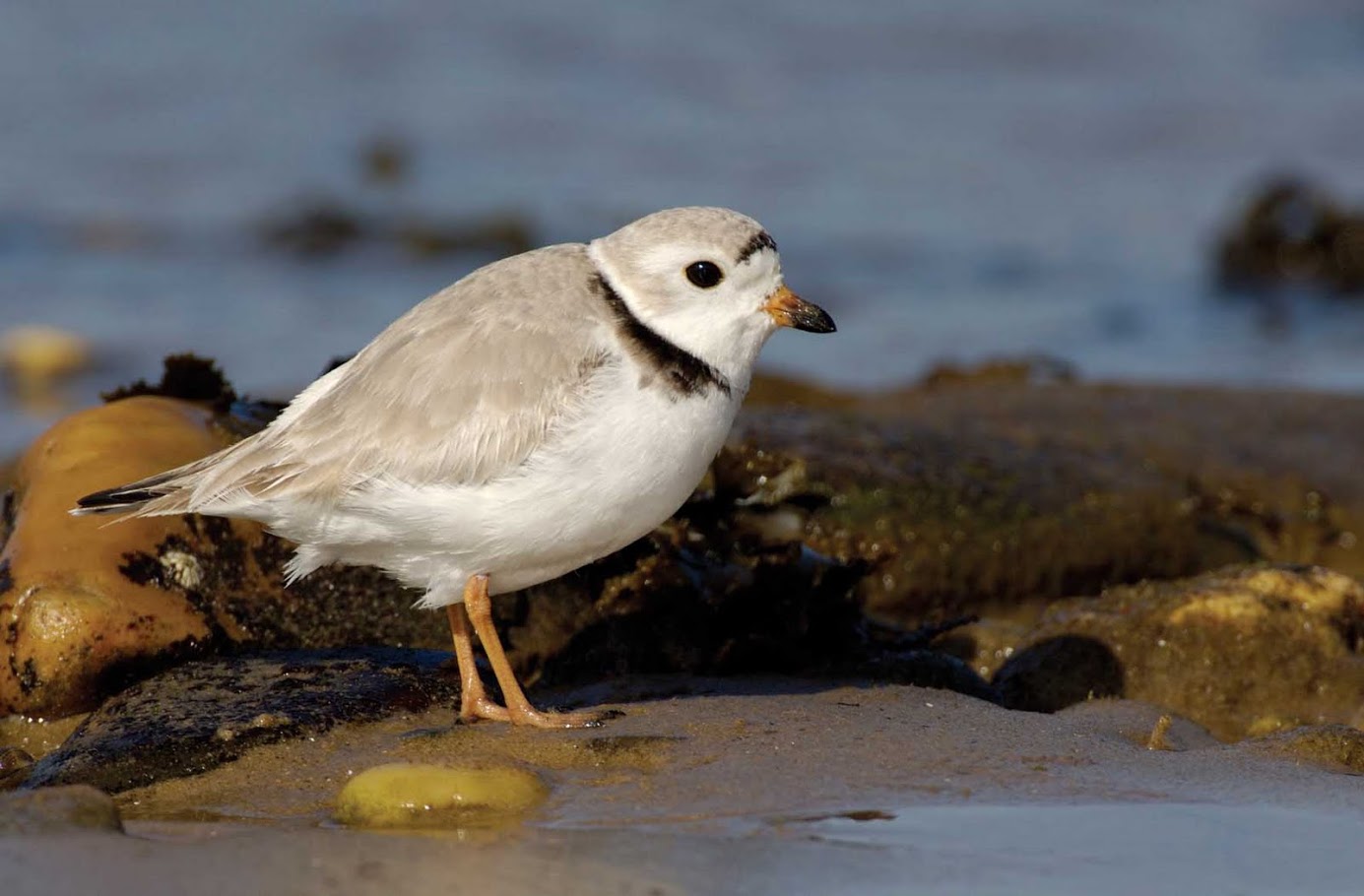
From March through August, the shores of the Long Island Sound are home to the federally threatened Atlantic Coast Piping Plover (Charadrius melodus) population. After spending the winter in the southeastern US and Caribbean, piping plovers migrate north, establish territories, and nest on flat, open areas of the beach. They lay eggs directly on the sand in shallow scrapes and males and females take turns incubating the eggs.
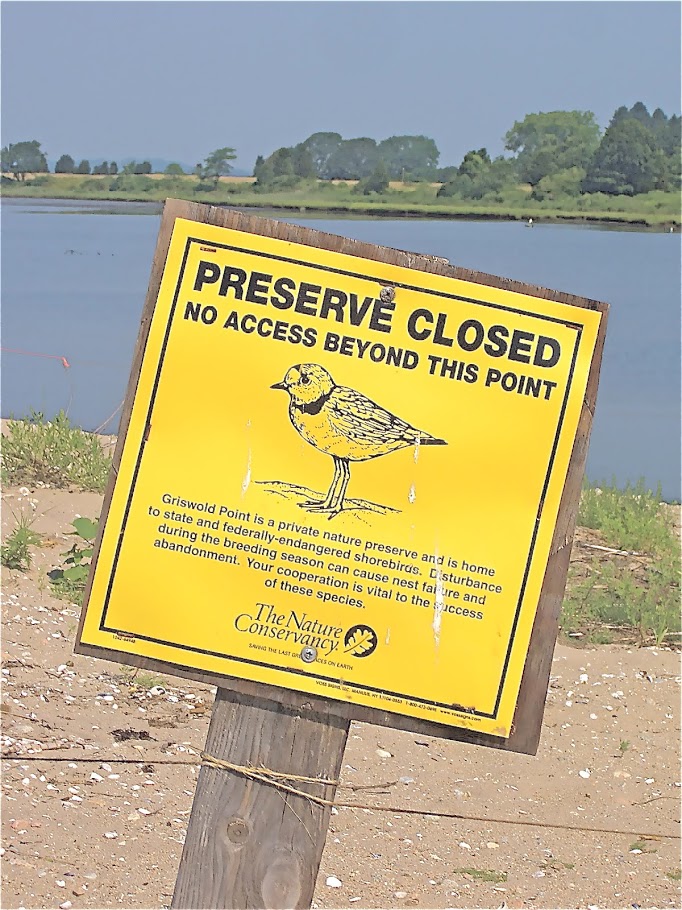
Biologists with the New York State Department of Environmental Conservation, the Connecticut Department of Energy and Environmental Protection, and other conservation organizations protect nesting areas with symbolic fencing and signage, but piping plovers also need to safely access the wrack line and other intertidal areas where they forage for small invertebrates. With light-colored feathers and eggs, piping plovers are well-camouflaged to avoid predators. Their plumage and small size eggs make it hard for people to see them, so beach-goers often don’t realize that they’re sharing the beach with nesting piping plovers. Pets on the beach, recreation near nests, and other types of human disturbance can threaten the survival of hard-working piping plover parents and their young.
With only a few hundred nesting pairs left in New York and Connecticut, piping plovers are state-listed as endangered in New York and threatened in Connecticut. In order for them to be able to safely nest, rest, and raise their young, piping plovers need beachgoers to do their part and share the shore with birds and other wildlife.
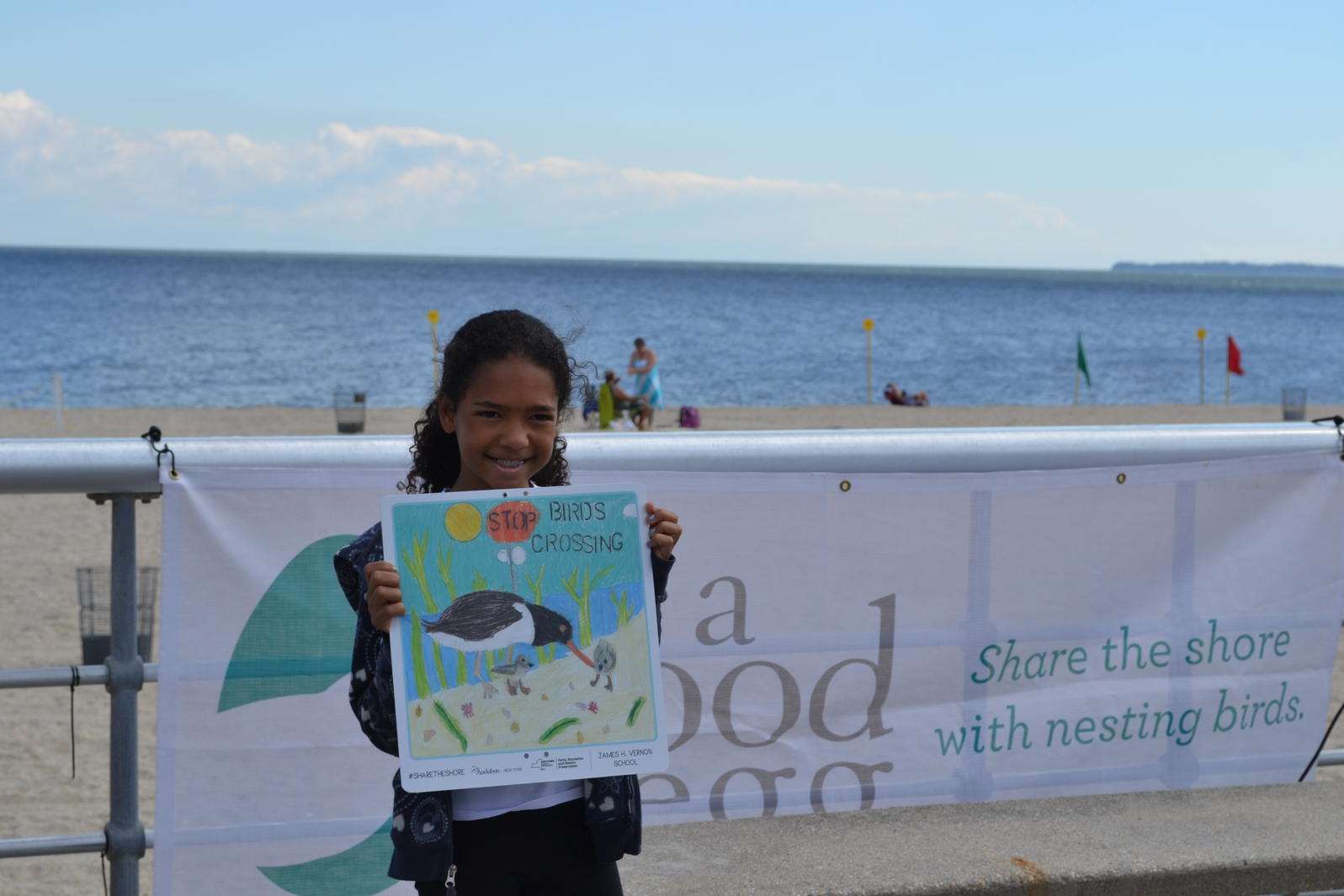
Learn more:
The Sound Facts series is adapted from Sound Facts: Fun Facts About Long Island Sound, a Connecticut Sea Grant publication.
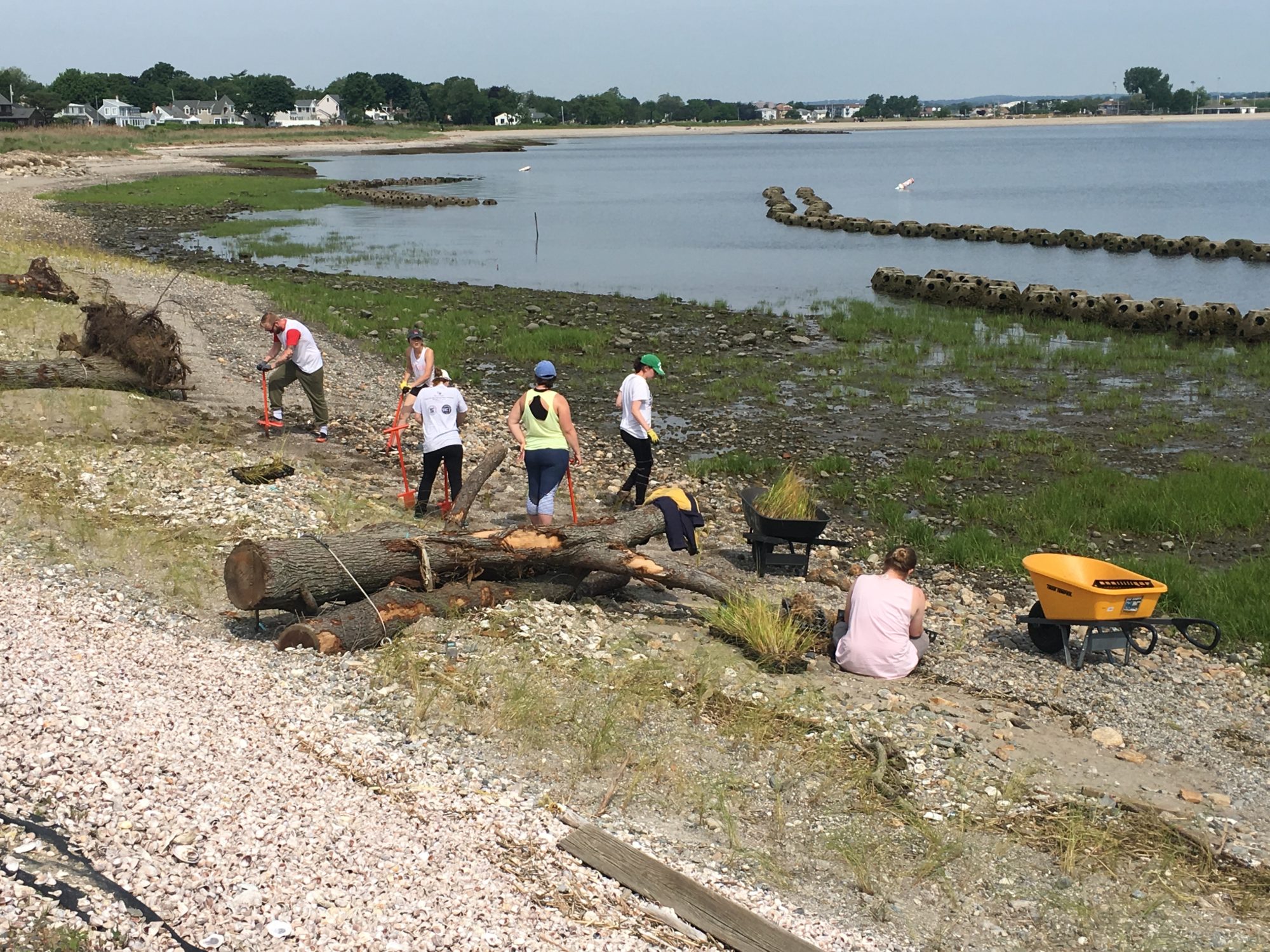
The National Fish and Wildlife Found announced on March 23 the release of the updated and enhanced 2020 Request for Proposals (RFP) for the Long Island Sound Futures Fund grant program. The deadline to apply is June 2, 2020.
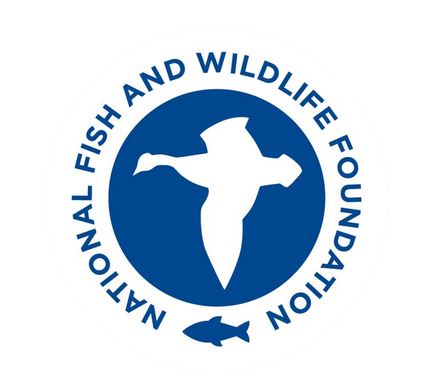
Approximately $3 million is available for planning or implementation of environmental projects in the Long Island Sound watershed (Connecticut and New York and the upper New England states of Massachusetts, New Hampshire, and Vermont. The grant range is from $5,000 to $500,000.
Connecticut and New York grants are available for:
- Clean Waters and Healthy Watersheds – projects to reduce nutrient loading, combined sewer overflows, stormwater runoff, and nonpoint source loading.
- Sustainable and Resilient Communities – projects to increase the knowledge and engagement of the public in the protection and restoration of the Sound.
- Community Coastal Resilience – projects to enhance coastal resilience with natural and green-gray infrastructure.
- Thriving Habitats and Abundant Wildlife – projects to restore coastal habitats and foster fish and wildlife in the coastal boundaries of CT and NY.
Connecticut, Massachusetts, New Hampshire, New York, and Vermont grants are available for:
- Water quality – projects whose primary purpose is to prevent or reduce nitrogen loading such as enhancing riparian forested buffer/channel, in-stream restoration, reducing agricultural runoff, low- cost retrofits at wastewater treatment facilities, etc.
Check out the RFP on the National Fish and Wildlife Foundation website.
Register for a Webinar! RFP Updates & Enhancements!
NY and CT Applicants: Register Here
MA, NH, and VT Applicants: Register Here
Share a Project Idea! Questions?
Send a paragraph or two describing who, what, where, when, why, and approximately how much or send along with questions to Erin.Lewis@nfwf.org.
The Long Island Sound Study initiated the LISFF in 2005 through EPA’s Long Island Sound Office and NFWF. To date, the Futures Fund has invested $22 million in 451 projects. The program has generated an additional $39 million in grantee match, for a total conservation impact of $62 million for regional and local projects. The projects have reconnected 176 miles of river for fish passage, restored 1,114 acres of critical fish and wildlife habitat and open space, treated 212 million gallons of stormwater pollution, and educated and engaged 4.9 million people in protection and restoration of the Sound. Learn more about the Long Island Sound projects in the grants section.
*The availability of estimated funds is contingent upon the federal appropriations process and does not commit future appropriations. Funding decisions are made based on the funding level and time of when funds are received by the National Fish and Wildlife Foundation.
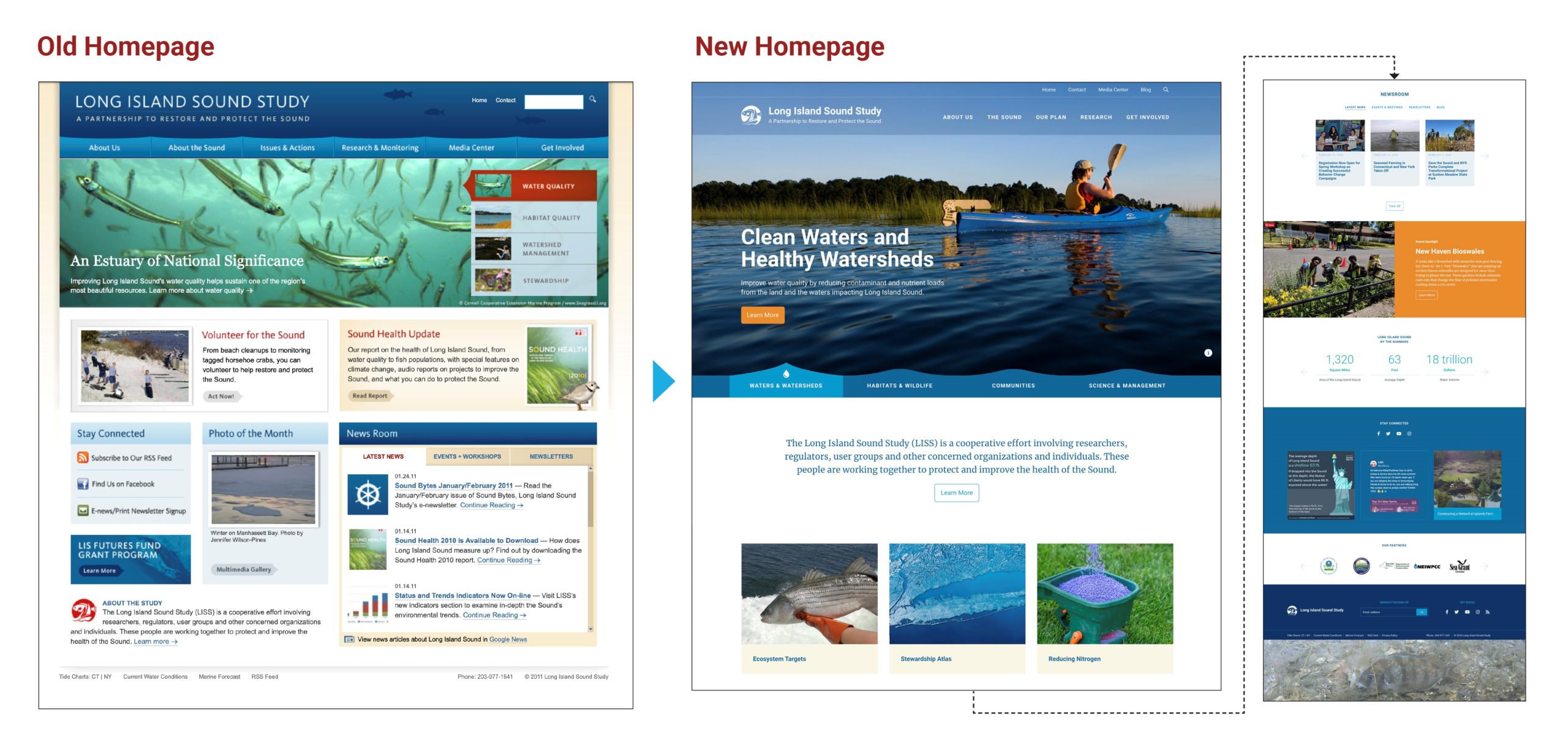
Stamford, CT (March 23) – The Long Island Sound Study today launched a new design for its website that will make it easier to communicate the efforts of the federal, state, and local partners to restore and protect Long Island Sound, an estuary of national significance. Estuaries, waterbodies where saltwater from the ocean mixes with fresh water from rivers draining from the land, are among the most productive ecosystems on Earth.
With the new design, the website has been reorganized to better display the actions that are taking place to achieve goals under the four themes of the Long Island Sound Comprehensive Conservation and Management Plan: Clean Waters and Healthy Watersheds, Thriving Habitats and Abundant Wildlife, Sustainable and Resilient Communities, and Sound Science and Inclusive Management. New features include project Spotlights, a blog on personal stories about Long Island Sound, and descriptions of projects being implemented through the Long Island Sound Futures Fund grant program. There also are story maps on the Long Island Sound Study’s priority habitats and water quality monitoring, articles on the use of the harvesting of seaweed and shellfish to improve water quality, and a slide show and video of Long Island Sound’s Seafloor Mapping program.
The new design also will make it easier to view existing features such as the Long Island Sound Study Ecosystem Targets and Supporting Indicators, the Long Island Sound Study Stewardship Area Atlas, and slide shows on what makes Long Island Sound special.
The website, www.longislandsoundstudy.net, was redesigned by Taylor Design, a Stamford-based marketing company specializing in graphic and web design solutions. Taylor Design also worked on the last major redesign of the website in 2010, which won several design awards. The new design takes advantage of modern features that will make it easier to read and navigate web pages, to view higher resolution images and video, and to adapt to screens from mobile phones to large-screen monitors. The website also uses the latest content management software to make it easier for Long Island Sound Study’s staff to update information on the site.
In the 1980s there was widespread concern about water quality conditions in Long Island Sound, including the lack of sufficient oxygen for the Sound’s marine life. To fully restore the health of the Sound, it was decided that a cooperative effort focusing on the overall ecosystem was needed. As a result, EPA, New York, and Connecticut formed the Long Island Sound Study in 1985, a bi-state partnership consisting of federal and state agencies, user groups, concerned organizations, and individuals dedicated to restoring and protecting the Sound. In 1994, the LISS developed a Comprehensive Conservation and Management Plan to protect and restore Long Island Sound. This plan was updated in 2015 with ambitious targets to drive further progress through 2035.
